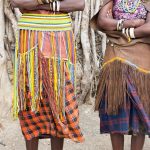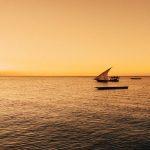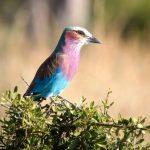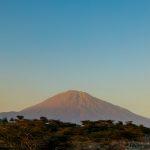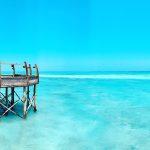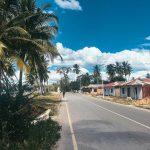Covering almost 50,000 square km, an area greater than the size of Switzerland, the Selous Game Reserve is one of the largest areas set aside for wildlife preservation anywhere in the world. It was declared a ‘World Heritage Site’ by the UN in 1982, but the number of visitors each year is still below 5,000 and this lack of mass tourism ensures that those who do visit the Selous enjoy a true wilderness experience.
The vast area contained within the boundaries of the Selous Game Reserve accounts for 5% of the landmass of Tanzania, and yet there are just a few options for tourist accommodation; all high-quality, low-impact lodges that maintain high standards. The freedom to take walking and boating safaris within the reserve means that guiding standards are also especially good and can extend to include excellent options to fly-camp overnight in the bush. All of these allow visitors to enjoy memorably varied perspectives on life in this green and lush southern corner.
Only a small northern portion of the game reserve is allocated to photographic tourism. This area naturally appeals to a photographic lens, as the waterways and plains reflect all the changing colours of the sun and attract numerous well-feathered water birds and raptors.
The tourist sector north of the Rufiji River extends to Stiegler’s Gorge in the west and the TAZARA railway in the north, containing various forms of vegetation found in this ecosystem. A combination of the Rufiji River, as well as open woodlands, plains and dense thicket forests, makes the Selous an interesting ecological environment and an ideal location to explore over several days by vehicle, on boat trips and on foot.
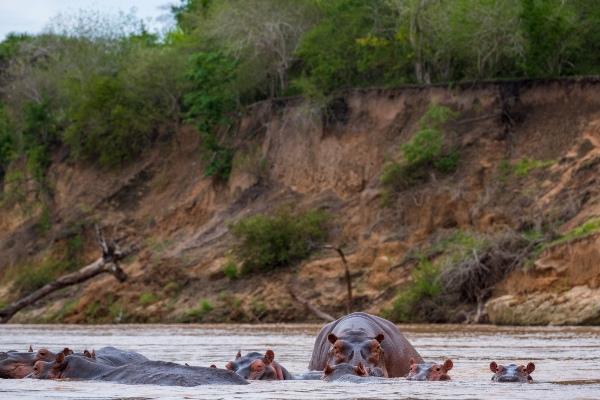
History of the Selous Game Reserve
After an unknown group of ancient people left stone tools and bowls in the region that is now the Selous, the next documented stage in its history tells how the northern boundary village of Kisaki became an important junction for two important caravan routes that connected with Kilwa for the trade of ivory and slaves. Although the town remained a major centre for successive generations, later reports from early explorers described the area in the mid-19th century as being sparsely populated by people or game.
Selous Game Reserve was named in 1922 after the English explorer, Captain Fredrick Courtney Selous, who met his fate in combat with the Germans beneath Sugar Mountain in Beho Beho during the 1st World War. His name is generally pronounced with a French affectation that does not enunciate the final ‘s’, and this is the common pronunciation of the park’s name today.
Fredrick Courtney Selous was the son of a chairman of the London Stock Exchange and finished his public school education with a passion for Africa inspired by the writings of Livingstone. In 1871, defeating his family’s desires for him to follow up a medical profession, he travelled to South Africa and embarked on an extraordinary, and now legendary, expatriate lifestyle.
His friendship with King Lonbengula in Bulawayo allowed him to travel freely through Matabeleland, one of the last areas of wild big game herds that had survived the extermination of the first Europeans. Selous has been described as the ‘greatest of the white hunters’ and distinguished himself from other trigger-happy expats by promoting a keen interest in nature and early theories on conservation and natural history.
His skills as a tracker and hunter, as recorded in his best-selling accounts sold to an enthralled audience in Victorian England, were widely celebrated, and he began leading safaris through the bush. Selous was responsible for organising the extravagant hunting safari expedition for Theodore Roosevelt and his entourage in 1909.
Although retired and living in Surrey at the outbreak of WW1, Captain F.C. Selous felt that he could contribute to the war effort in East Africa. He joined the 25th Royal Fusiliers in Nairobi and pursued the retreating German Schutztruppe through Southern Tanzania; an arduous journey that Selous is said to have refused to ride, insisting that he should march alongside his increasingly sick and depleted column of men.
Each night when his men retired to their tents, Selous was reported to disappear into the bush with his butterfly net to collect specimens. The Captain was 64 years of age when he finally died in action.
Much later, another expatriate Englishman, Constantine Ionides, developed his own extraordinary reputation as a hunter with a penchant for conservation. He played an important role through the 1990s in assisting with the work of controlling poaching of the elephant population with the support of Tanzanian Game Officer, Mzee Madogo.
Such a history provides a background to the present demise of the reserve being divided between photographic tourism and a hunting zone, the latter being the major source of income required to police the area against poaching and thus support the entire conservation area. Around 210 foreign hunters pay a vast sum of money to visit the reserve between July and November and fulfil a quota to shoot up to 2,000 designated animals.
The central principle of the Management Plan is to keep human impact to a minimum, and plans are underway to expand the area set aside for photographic tourism south of the Rufiji River.
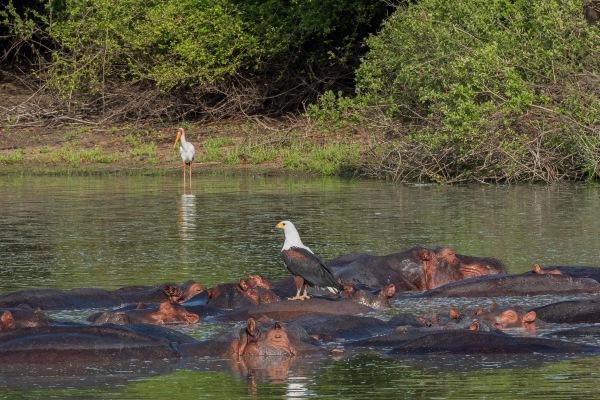
The Landscape of the Selous Game Reserve
The Selous Game Reserve is home to a unique and very unusual safari environment.
Forests and woodlands are divided by the lagoons, sandbanks and lakes of the Rufiji River, and the spectrum of wildlife is equally diverse and distinct. This southern location attracts a unique combination of East and Southern African wildlife, both resident and migratory, and particularly a curious and colourful assortment of over 440 known species of birds.
The scenery is varied, with unusually green grasses and tangles of vegetation. The river routes are characterised by legions of tall Borassus Palms along the banks that grow up to 25m tall and leave a tall headless totem when the water courses change direction and they become too thirsty to survive.
The same demise is thought to explain the spooky silhouettes of ancient leadwood trees that remain intact when they die after up to two millennia of life, leaving a skeletal perch for songbirds and raptors that retains a perfect yet utterly lifeless photogenic poise.
The Selous conserves a surprisingly colourful African landscape, and the white forms of the leadwood are in stark contrast to the surrounding vibrancy of well-watered greens and a ranging palette of sandy terracottas.
The eastern area of the reserve around Selous Safari Camp, Rufiji River Camp and Mbuyu Camp is mainly a grassy woodland, with a mass of Terminalia trees and sweet-scented African mahogany providing fragrant shady areas through which to enjoy walking safaris. Further north, and westwards towards the rise of the Beho Beho Mountains, the land is mainly covered by low miombo woodland.
The Western reaches of the reserve are the least developed, with Sand Rivers Selous presently the only camp in the area. The elevation gives magnificent views across the woodlands and plains of the southerly hills. This scenic region is now called Stiegler’s Gorge, after the unfortunate Swiss fellow who came to a sorry end when he met an elephant here at the turn of the last century.
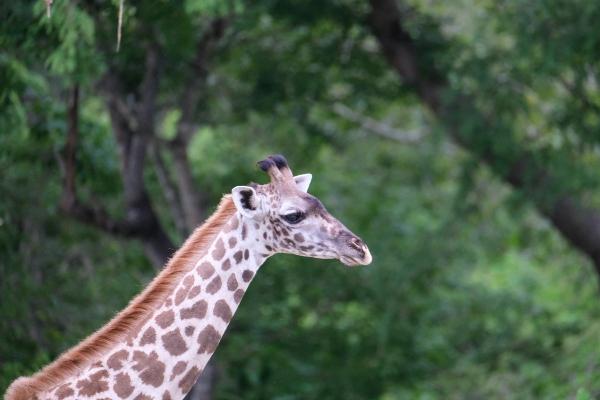
Wildlife in the Selous Game Reserve
The many intricate waterways and tributaries of the ever-meandering Rufiji River Delta attract a healthy population of elephants and are packed full of grunting hippopotami and yawning crocodiles that lumber ominously into the water at the first sound of a boat.
Herds of game animals disperse after the rains and then later regroup when the water sources concentrate and they are forced to venture into the open to drink, risking predator attacks with the protection of the crowd. A mass of water birds can be seen along the sandbanks, lagoons and riverine channels, where colourful-legged terns and long-legged yellow-billed storks make up a comical feeding trio with huge beaked pelicans in the shallows.
The swift and elegant flight of African Skimmers is a delight to see, as is the feisty interaction between birds like the statuesque Goliath heron vying for territory with a broad-chested African Fish Eagle.
Boat trips along the river are coloured with glimpses of at least eight different species of kingfisher, and up to nine different bee-eaters can be found in the woodland areas. Special examples of the latter include the Bohm and Swallowtail bee-eaters and, in the height of summer, the northern species of carmine bee-eater can be seen.
The lucky birdwatcher may also catch an evening glimpse of Pel’s fishing owl, a small nocturnal fellow who only fishes under the cover of night.
You might encounter either of the two resident species of wildebeest, the black-bearded gnu and the southern species of Nyasa wildebeest, or come across a herd of grumpy buffalo. There is a possibility of a chance sighting of a less moody but more beautiful rare sable antelope around Matambwe and up to Stiegler’s Gorge, and sometimes the impressive figure of a greater Kudu is seen standing proudly with its long spiralled horns aloft.
The Selous is home to large herds of eland, the largest antelope of all, and the Selous eland are reputed to grow the longest horns of any in East Africa. These huge record-breaking antelope with astonishing agility for their size are a fairly common sight.
You may also come across an Eastern Bohor reedbuck, smaller than an impala, or the hefty features of the Lichtenstein’s Hartebeest, a breed unique to the Selous.
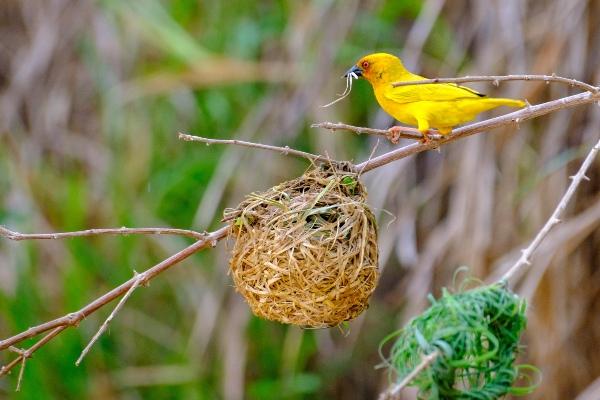
Safaris in the Selous Game Reserve
Safaris in the Selous provide a rare opportunity to spot an uncommon range of animals, but the terrain makes chances of seeing them much harder than flat, short grass plains like those of the Serengeti. Nevertheless, these woodlands and savannas support a wide range of wildlife, particularly antelope and wildebeest and a famously large population of elephants.
Several lion prides reside in the Selous, and there is always the possibility of a chance encounter in the bush. Their roars can often be heard from your lodge beds and their trails are spotted nerve-rackingly close to camp.
The river and bush habitat also suits the reclusive nature of the leopard, which has a reputation for being frustratingly hard to find. They are also prolific in the area and it is possible to catch a tantalising glimpse of scratches and signs of their activity in trees.
There remains a fair chance of spotting leopards or at least arriving at camp just the day after reports of the best sightings all year. Much less likely is the hope of seeing a cheetah here, although there is a reported tiny population.
African Wild dogs are a rare and protected species throughout Africa but are thriving in the Selous where they are less plagued by hyenas than elsewhere in Tanzania.
Giraffes seem to extend their necks above bushes around every turn in the road, and are often surprised into a slow-motion but surprisingly graceful flight. Skittering zebras are also an impressive sight against the burnished grasses.
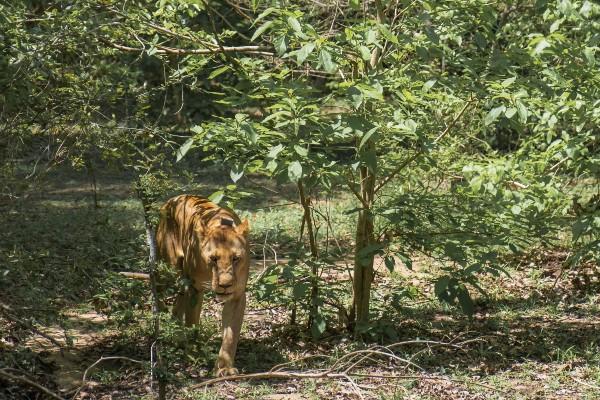
If you’d like to book a safari in the Selous Game Reserve, Tanzania Odyssey is a specialist tour provider that offers bespoke itineraries for travellers exploring the country. You can take a look at our northern Tanzania tours or get in touch to find out more about what we offer.

